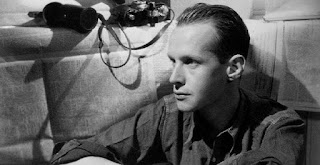Henri Cartier Bressons Research
Henri Cartier-Bresson was born on August 22, 1908 in Chanteloup, France. A pioneer in photojournalism, Cartier-Bresson wandered around the world with his camera, becoming totally immersed in his current environment. Considered one of the major artists of the 20th century, he covered many of the world biggest events from the Spanish Civil War to the French uprisings in 1968.
Cartier-Bresson's rise as a photographer proved rapid. By the mid 1930s he'd shown his work in major exhibits in Mexico, New York, and Madrid. His images revealed the early raw possibilities of street photography and photojournalism in general.
During an exhibit of his prints in New York in 1935 Cartier-Bresson befriended another photographer, Paul Strand, who'd begun to experiment with film. Inspired by what he saw, Cartier-Bresson abandoned photography and returned to France where he took work as an assistant with French filmmaker Jean Renoir. Over the next three years, Cartier-Bresson worked on a handful of Renoir films, including his most critically acclaimed, La Règle Du Jeu (1939).
But the documentarian in Cartier-Bresson had no use or particular talent for directing feature films. Instead, he was drawn to showing real stories about real life.
His own life took a dramatic turn in 1940 following the German invasion of France. Cartier-Bresson joined the army but was soon captured by German forces and forced into prison-of-war camp for the next three years.
In 1943, after two failed attempts, Cartier-Bresson escaped for good and immediately returned to his photography and film work. He created a photo department for the resistance and following the end of the war, was commissioned by the United States to direct a documentary about the return of French prisoners.



OK good, but now when you post an image you must do an evaluation of what it is, composition, context, connotation, denotation, decisive moment... please discuss when we meet...
ReplyDeleteadditionally you will need to connect this post with your own personal documentary taken over the Christmas period or later (London visit)
ReplyDelete